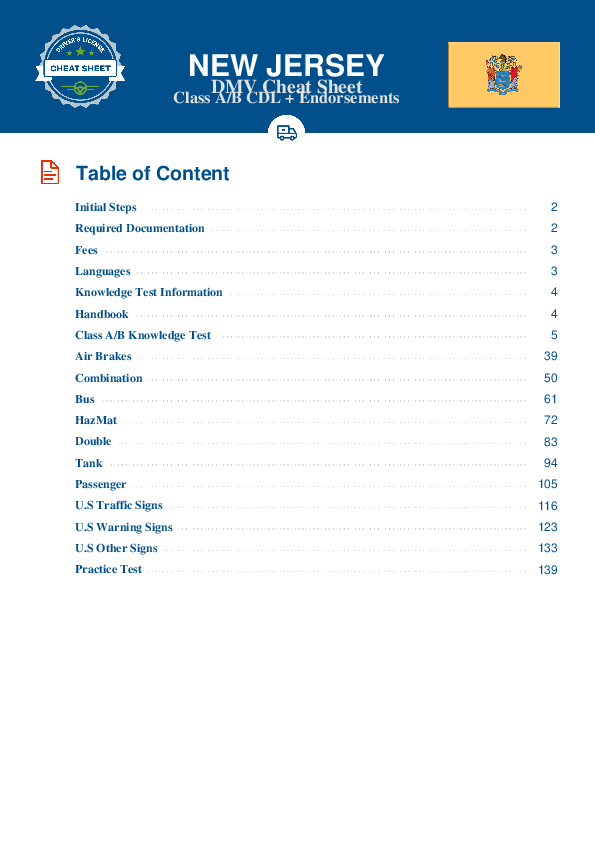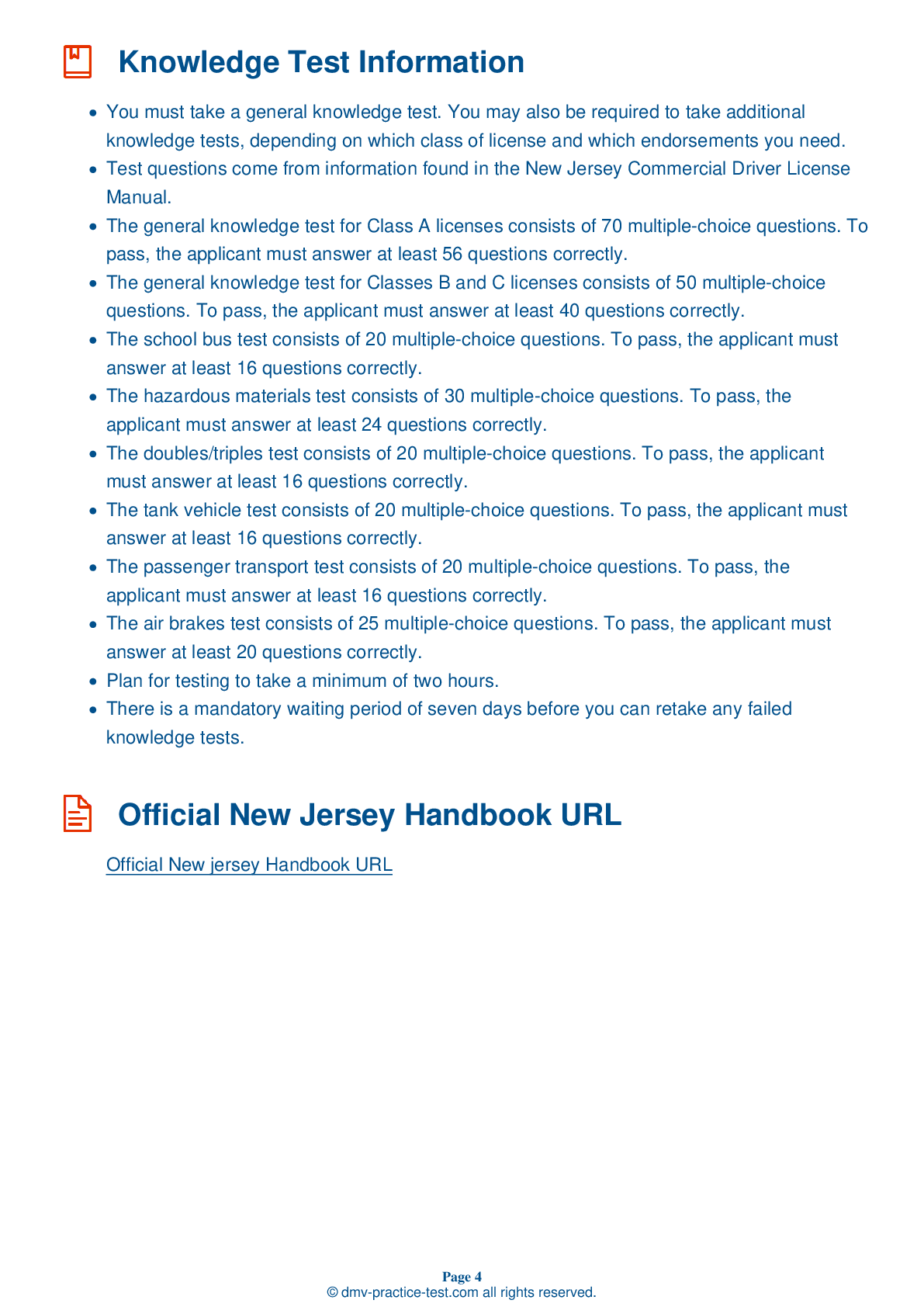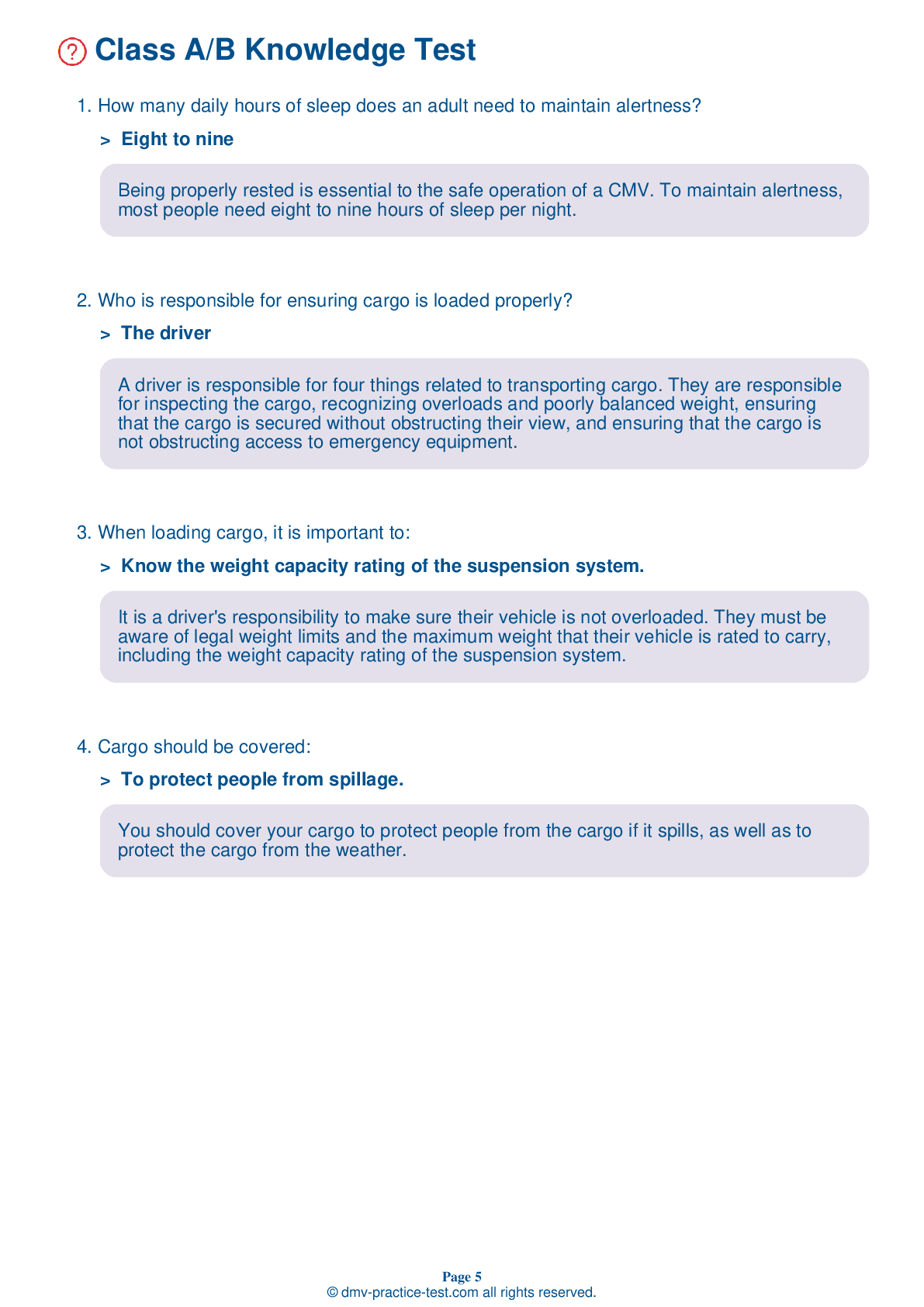Bus #2
Bus Driver Testing | New Jersey 2025 #2
Train for FREE online with our NJ bus CDL test. The official exam test consists of several obligatory parts, with all of them checking your knowledge of different blocks of road rules. If you need to obtain a license in New Jersey in 2025, learn how to become a bus driver and then practice as much as possible. Free sample tests published on our website will help you check and improve your knowledge and boost your grades. Please bear in mind that DMV requirements for a bus driver may vary from state to state.
20
16
20
1 . Before evacuating a bus in response to a hazard, a driver should:
Have students open all the windows.
In most emergency situations, students will be the safest and the easiest to supervise if they are not evacuated from the school bus. If there is time, the driver should contact their dispatcher to explain the emergency situation before making the decision to evacuate.
2 . Which of the following is not acceptable emergency equipment?
Four yellow squares
During the vehicle inspection test, you will need to show emergency equipment, including spare electrical fuses; three red reflective triangles, six fuses, or three liquid burning flares; and a properly charged and rated fire extinguisher.
3 . When taking the basic control skills test, drivers are:
Allowed to leave the vehicle, but only if the vehicle is placed in neutral and the parking brake is set.
During the basic vehicle control skills test, you must place the vehicle in neutral and set the parking brake before exiting the vehicle to check its position. You may check the position of the vehicle no more than twice, except during the straight line backing exercise, where you may look no more than once.
4 . During a vehicle inspection, ensure that lug nuts are all of the following, except:
Free of rust.
During a vehicle inspection test, you must ensure that all lug nuts are present, free of cracks and distortions, and showing no signs of looseness, such as rust trails or shiny threads. Verify that all bolt holes are free of cracks and distortions.
5 . During the skills test, if making a turn that requires a stop, you should:
Keep the front wheels aimed straight ahead.
If you must come to a stop before making a turn during the driving skills test, you should come to a smooth stop behind any stop line, crosswalk, or stop sign. Keep your front wheels aimed straight ahead and do not let your vehicle roll. If stopping behind another vehicle, stop where you are still able to see the rear tires of the vehicle ahead of you.
6 . If a school bus needs to be evacuated, passengers should:
Use the exit deemed safest.
If a school bus needs to be evacuated in the event of an emergency, the driver must quickly determine which exit or exits will be safest for students to use and direct the students to that exit.
7 . After students unload at a school, the driver:
May turn off the dispatch radio.




